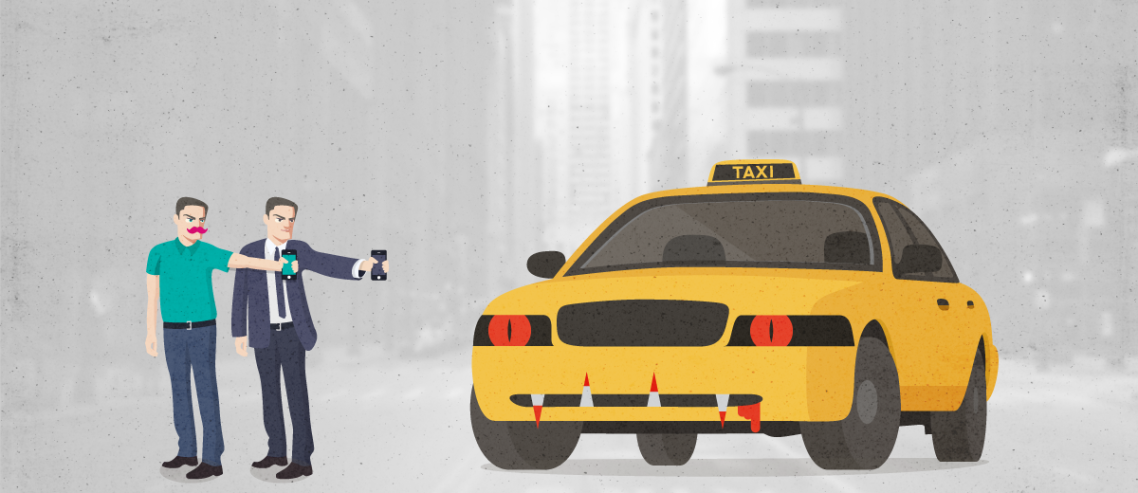The Uber Rating System Is Problematic – And Malaysian Society Is Making It Worse
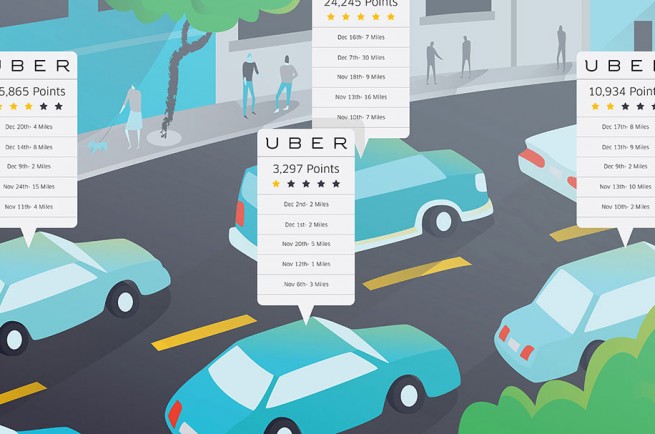 Thirsty for JUICE content? Quench your cravings on our Instagram, TikTok and WhatsApp
Thirsty for JUICE content? Quench your cravings on our Instagram, TikTok and WhatsApp
E-hailing apps like Uber and Grab are surely no longer strange concepts to anyone living in Malaysia, let alone Kuala Lumpur. In a huge, bustling city like KL, with taxi companies infamous around the world for bad service and even worse prices, the legalisation of ride-hailing apps may have, at first, seemed like the answer to most people’s prayers. But with ride-hailing apps like Uber comes a rating system, which allows both customers and drivers to rate their experiences with each individual out of five stars, and the average of every customer or driver’s collective score becomes their “rating” out of five (normally rounded to two decimal places). At first glance, the rating system may appear to offer customers and drivers equality; a world in which the arbitrary declaration that “the customer is always right” is discarded in favour of fair treatment for drivers. But in actual fact, the five-star rating is more insidious than it lets on, and does much more harm than good in the long term – partly because it is flawed in itself, and partly because of the way Malaysian society operates as a whole.
If you’re bristling at the thought that a level playing field for both customers and service providers could be anything less than ideal, you might just be too eager to buy into the flimsy idea of equality that it offers. There is nothing inherently wrong with giving both drivers and customers the power to criticise each other, of course. Uber drivers will be barred from the app if their rating gets too low (the current official threshold is 4.3 stars) or if multiple complaints about unsavoury behaviour are filed against them, and similarly, passengers with low ratings wanting to take an Uber may simply never get picked up, seeing as drivers can choose to decline pickup requests from customers (and may be less willing to pick up someone with a lower rating). For other ride-hailing apps, this is sometimes even stricter – the threshold for Lyft drivers (in America) is 4.7 stars. There is due cause to keep your ratings high, whether you’re a passenger or a driver. But that is not to say that allowing a ratings system, or a playing field, so to speak, won’t encourage the members of each party not to play dirty. A rating system only works fairly in a world without prejudice or malice, and unfortunately, there’s plenty of that to go around in the world we live in.

The ratings system on ride-hailing apps, firstly, does not call for much justification of the rating that a driver or customer is actually given. For example, with Uber, riders are prompted to simply choose a categoric reason (such as “navigation”, “professionalism”, or even the very ambiguous “other”) when giving a driver three stars or less. Uber drivers, on the other hand, are not required to explain why they rate a passenger down at all. Neither are these ratings moderated, to ensure that the score a driver or passenger is given is actually deserved. There is no solace in the anonymity of reviewers, either – ratings are immediately updated, which allows anyone who can do basic mathematics to approximate the rating they’ve been given. Admittedly, it would take too much manpower to moderate each and every rating given, what with ride-hailing apps becoming the new norm in most cities. But that still doesn’t exonerate the ratings system from its flaws.
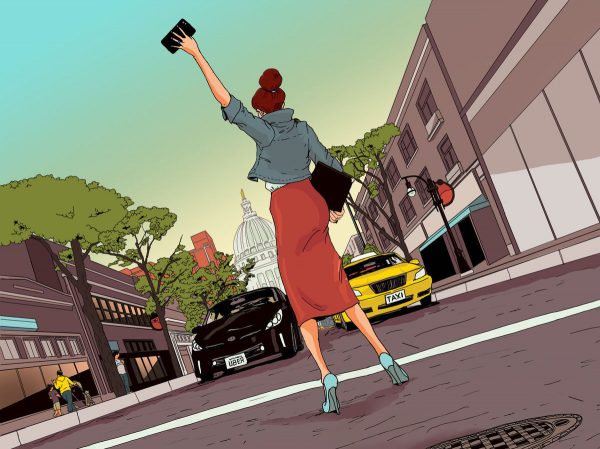
A big concern that seems to be glossed over by the media nowadays (in favour for brutality and violence) is the simple issue of drivers scamming their customers. Uber requires the driver to manually choose when the trip starts by themselves, seeing as there is no way for the app to automatically detect when the rider gets in the car. There is, therefore, no way to prevent the driver from simply starting the trip even when the rider isn’t in the car, and driving to the destination before then collecting their money via credit card payments. This is impossible if the rider has chosen to pay in cash at the end of the trip, of course, but a malicious driver willing to take these risks once in a while could very well pull this off – even if the trip results in a one-star rating, the driver could make other trips to get their rating up, before pulling another scam.
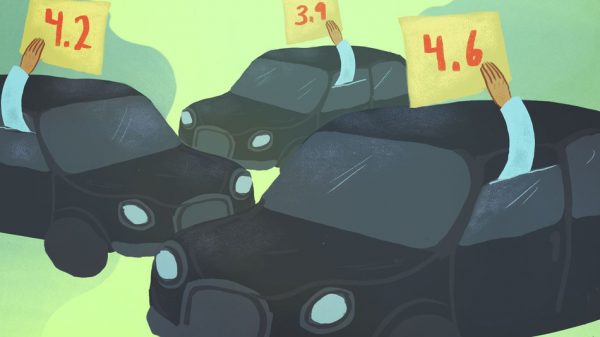
An Uber customer I interviewed about her worst experiences with the app recounted an incident where her Uber driver had sped past her while she was still standing at the pickup point and started the trip while she still hadn’t been collected. Upon calling the driver, he had insisted that the Uber system had displayed her destination as her pickup point, and did turn back to pick her up, but later gave her a one-star rating when she had been dropped off. Seeing as drivers aren’t required to justify their ratings of passengers, this individual had basically gotten away with unreasonably discrediting an innocent passenger, who could even have been the victim of a scam had she chosen to pay with a credit card attached to the app. The lack of accountability for something as pivotal as a rating system is clearly a problem – the system allows drivers to get away with unsavoury actions, or even mark down their passengers for no reason at all. This works vice versa, too – it wouldn’t be too hard for a malignant passenger to randomly choose a categoric explanation for a one-star rating, even if it was untrue. The ratings system therefore does not and will never amount to a true reflection of how courteous a passenger or driver is. Yet today, it is still the cornerstone on which Uber is based, and the basis of how drivers and passengers are excluded from the service, which seems more tyrannical than just.

Rating systems are even less suitable for implementation in countries like (but not limited to) Malaysia, which is notorious around the world for its long-standing history of institutionalised racism and classism. Anyone who’s lived in Malaysia for at least a couple of months would be acutely aware of the divide between races and social classes, once they learn to look past the thin veil that is the government’s “1Malaysia” campaign. It’s no surprise, then, that a system that is already flawed would only be made even worse by the way Malaysian society currently operates – the racial and sociopolitical chasms between citizens undoubtedly manifest themselves in the way passengers and drivers rate each other.

One passenger interviewed recounted experiences where they have been rated down multiple times by drivers of a different race to them, even though they had taken care to be on time for pickup, not to slam the door of their car when getting in and out, and had attempted to make conversation with them only to be met with an unfriendly, stony silence. Another passenger, a Malay teenager, had been picked up by a Malay driver who mistook her for a Chinese girl, accused her of lying about her race even when she corrected him and spoke to him in fluent Malay, and would only speak to her mockingly in broken English. A third passenger experienced a slightly different form of discrimination – her driver repeatedly expressed strong disdain for rich and well-to-do people, stressing his view so adamantly to the point that she felt so uncomfortable, she pretended that she’d gotten her address wrong in the app and asked to be let off somewhere else so that he wouldn’t see where she actually lived.
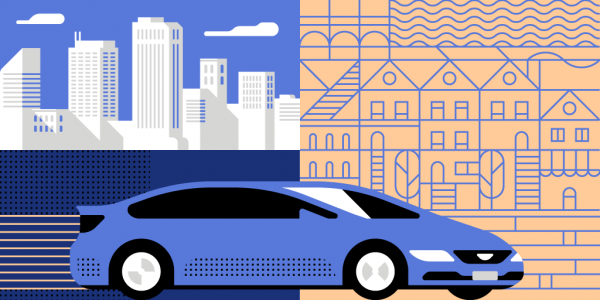
Several Uber drivers working in Kuala Lumpur have spoken of similar experiences – one, a Chinese driver, claimed that passengers of a different race to him tended to rate him lower than Chinese passengers, while another stated that he had been treated condescendingly by a Caucasian woman before being given a low rating (that pulled down his overall score). It’s clear from these experiences that racial politics and social classification is clearly a huge factor at play in the ratings system here in Malaysia, when it rightfully should have no place in determining how good one’s service or courtesy is. The already glaring flaws in the ratings system are therefore only exacerbated by the toxicity of the culture that we live with daily. It would be easy to say that Malaysians therefore need to wake up and change their mindsets – but the sad reality is that institutionalised racism and classism has virtually been integrated into our society. It is of course imperative that we realise this fact and work to change our own ways, but the quickest fix to the ratings dilemma is simple – the complete removal of the system.

Another problem that the ratings system upholds is the stigmatisation of social anxiety. Countless guides to getting high ratings on ride-hailing apps encourage passengers to make friendly conversation with their drivers, and drivers themselves have often expressed that a silent passenger should be considered unfriendly at the least, and downright rude at worst. What this mindset doesn’t take into account is the growing number of people with anxiety disorders – anxiety being the most common mental illness at present, affecting 18% of people in the United States and 7.3% of the population worldwide. Social anxiety manifests itself in the form of extreme discomfort when interacting with strangers, and sometimes even friends and family (and goes hand in hand with depression and other general anxiety disorders). Strong-arming passengers and drivers into making conversation on the grounds that they could lose their jobs, or an affordable method of transport, only further serves to depict social anxiety as something to be penalised and berated. In Malaysia, a country particularly harsh with its depictions of mental health and where treatment for such disorders is lacking in availability, the ratings system is hence particularly flawed. Even though it doesn’t openly condemn such disorders, the subliminal message it sends is enough to continue oppressing those with mental illness, instead of giving them the help they deserve.
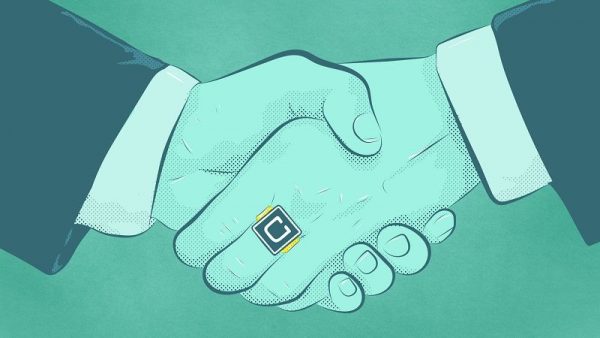
“But why is all this important?” you may ask. “The reflection of our societal flaws in a rating system doesn’t mean anything in the long run.” But that’s where you’re wrong, and particularly in a Malaysian context. E-hailing systems are still seen as fairly taboo transport methods in Malaysia – the mass media sensationalises anything slightly negative that happens with rides hailed from apps, from abduction and assault to protests by traditional taxi companies and their drivers to simple discourtesies. Seeing as the people who shout the loudest are often the most heard, it should come as no surprise then that many Malaysians are skeptical, or even afraid, of using e-hailing apps to get anywhere, due to the high volume of nightmare stories about Uber drivers circulated daily either on the news, the radio, or sensationalist Whatsapp chat messages from “concerned” older citizens. It’s no surprise that the older generation sees e-hailing apps as something to be avoided completely, or to be taken with a companion and never at night (for fear of what the driver may do). Ride-hailing apps are the new whipping boy for sensationalist fears – previously, this was the view on normal taxi companies, and before this, it simply wasn’t safe to go out at night – ask your granny.
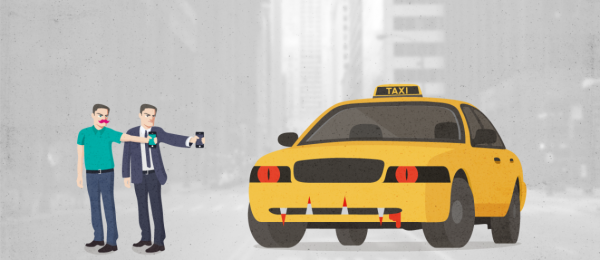
This is where the rating system comes into play. Ratings are the be-all and end-all on these ride-hailing apps – there are both official rating thresholds in place as a means of “quality control”, and unofficial rating thresholds purported by lifestyle sites and blogs all over the Internet – apparently most of them don’t recommend taking a driver who’s below a 4.5 rating. For a system that requires little to no accountability from its users, yet gives them the power to slowly but surely ruin each other’s lives should they wish, it seems very ill-placed indeed as the top factor to take into account when using such apps. In fact, it makes no sense to allow the ratings system to continue terrorising both drivers and passengers alike. Ride-hailing apps already have dedicated support lines and outlets (whether in the form of telephone hotlines or electronic forms) for customers to report dangerous or unsavoury behaviour by drivers – by incorporating these for drivers with regard to customers, this keeps the status of both driver and passenger level, and does not completely eradicate the opportunity to provide feedback to one another. There is a reason why the middle-man/negotiator/client-servicing person is still needed in this world for every sort of business.
If someone’s behaviour really warrants a one-star rating, one should be able to take five minutes out of their day to fill out a form and justify their thoughts as to why. Determining whether or not someone should be able to access an increasingly necessary service and/or source of income should not be as easy to destroy as simply tapping on one star after getting out of a car.
Social anxiety, a form of depression, is increasingly affecting Malaysians. Read our feature on clinical depression’s epidemic rate of spread here.


 Get Audio+
Get Audio+ Hot FM
Hot FM Kool 101
Kool 101 Eight FM
Eight FM Fly FM
Fly FM Molek FM
Molek FM